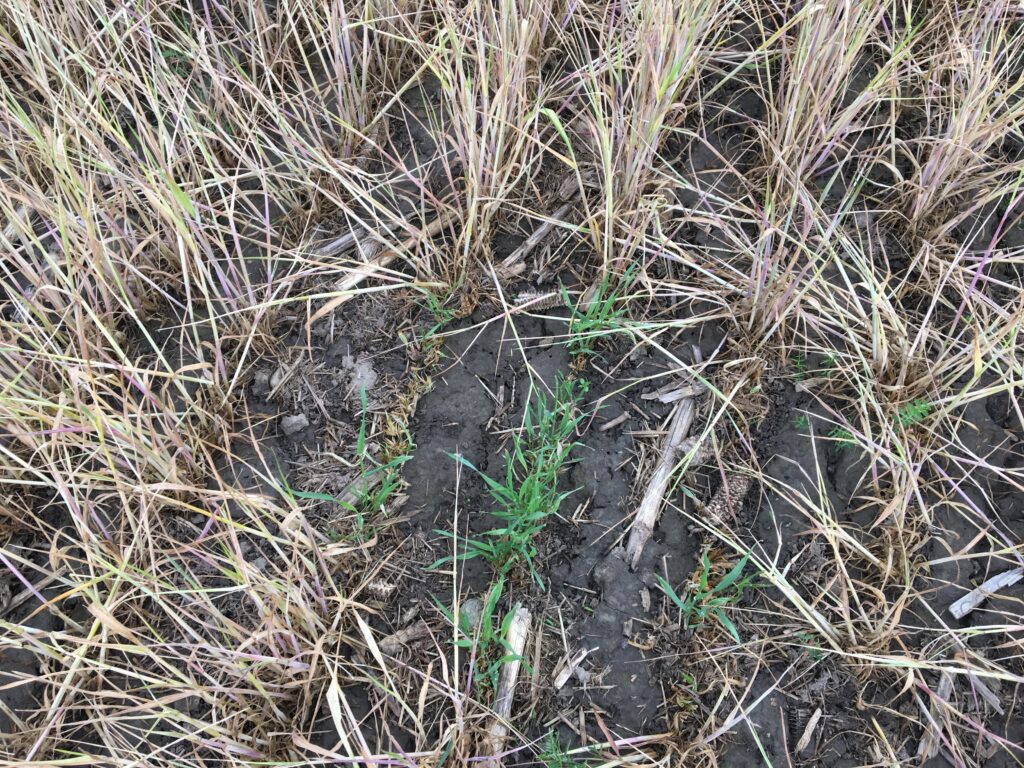Key Points:
- Rotating out of corn is the most effective way to reduce populations of Bt-resistant corn rootworm.
- To replace silage corn for 2021, establish fall rye or winter triticale immediately after 2020 silage corn harvest.
- After the cereal silage comes off in mid-May, establish sorghum-sudangrass and take two cuts.
- An energy source will need to be supplemented; producers should consult their nutritionist to correctly balance the ration.
Some regions in Ontario have observed high corn rootworm pressure in 2020 that is challenging current Bt rootworm hybrids. In regions where Bt rootworm corn hybrids have been used for more than three consecutive years, resistance among corn rootworm populations is suspected. Several growers in Ontario are reporting fields with rootworm injury to trait providers and research and extension scientists. Growers in areas with resistant rootworm populations can no longer rely solely on Bt rootworm hybrids for protection against rootworm injury. Continued use of these hybrids in problem fields can perpetuate the issue, allowing resistant populations to survive and spread to neighbouring fields. Other control measures like granular insecticides or seed treatments can only provide root protection in low to moderate populations; they do not reduce rootworm populations.
The best management practice to reduce the resistant rootworm population is to rotate out of corn for at least one year. Corn rootworm beetles typically lay their eggs in corn fields. If that field is rotated to a non-host crop (e.g. alfalfa, rye, triticale, sorghum-sudangrass) in the following year, the larvae will die after hatching, and the population will be eliminated. Growers are encouraged to use alternative forage options to replace silage corn for a minimum of one year, but ideally for the next two to three years.
Silage corn is grown to provide energy and fibre in a ration. It has very high yield potential. In addition to breaking corn rootworm lifecycles, alternatives to silage corn need to offer similar yield and nutritional value (Table 1). Double cropping fall rye and sorghum-sudangrass can provide similar yield and quality to a silage corn crop. Grain may need to be added to rations to provide additional energy. Producers should consult a livestock nutritionist to ensure rations are properly balanced.
| Table 1. Typical nutritional quality and yield of some annual forage crops | ||||
| Crop | Protein (%) | NDFd
(48 h) |
TDN (%) | Yield Potential (tonnes DM/ha) |
| Silage Corn | 6-8 | 55-68 | 66-72 | 12.4-15.6 |
| Winter Cereal (late boot to early head) | 16.1-16.5 | 57-73 | 60-64 | 5.0-9.0 |
| Sorghum-sudangrass | 8-17 | 50-60 | 56-70 | 8.0-12.0 |
Yield potential of fall rye is maximized when seeded 10-14 days before the optimum seeding date for winter wheat. However, rye can be successfully established after silage corn harvest. Where available and conditions permit, apply manure ahead of seeding. Seed at a rate of 110 kg/ha (100 lbs/acre) and at 2.5 cm (1 in.) depth, or deeper to seed into moisture. For fertility guidelines, see Chapter 4 of OMAFRA Publication 811: Agronomy Guide for Field Crops. Remember to account for nutrients from manure when calculating fertility requirements.
Apply 55-80 kg/ha (50-75 lbs/acre) of nitrogen at green-up in the spring to encourage tillering and increase forage yields. Rye should be harvested between flag-leaf and early boot for high-quality forage. In southern Ontario this typically occurs between May 10-20. Cut the crop at the optimum maturity stage and wilt to the target moisture for ensiling or baleage. If the rye shows signs of regrowth, a burn-down to terminate the crop will prepare the field for seeding sorghum-sudangrass.

Winter triticale can be substituted for fall rye. Seeding rates and fertility requirements are the same. Triticale is typically ready to harvest 10-14 days later than rye.
Sorghum-sudangrass requires soil temperatures above 12˚C to germinate, so conditions to seed generally occur in the last week of May or early June in southern Ontario. Where available and conditions permit, apply manure ahead of seeding. Seed at a rate of 33-44 kg/ha (30-40 lbs/acre) and at 2-4 cm (0.75-1.5 in.) depth. Use the phosphorus and potassium guidelines for corn (see Chapter 1 of OMAFRA Publication 811: Agronomy Guide for Field Crops). Remember to account for nutrients from manure when calculating fertility requirements. Apply 80-100 kg/ha (90-110 lbs/acre) of actual nitrogen up front, and 50 kg/ha (45 lbs/acre) after first cut.
Sorghum-sudangrass is a two-cut crop. Ideally, sorghum-sudangrass should be harvested before heads emerge, which is typically about 60 days after planting. At cutting, the crop is about 70-75% moisture and requires wilting before ensiling or making baleage. It dries slower than alfalfa. To encourage regrowth, leave 10-18 cm (4-7 in.) of stubble when harvesting. A second cut is typically ready 30-35 days after the first cut. Ensure that the crop is at least 65 cm (26 in.) tall before cutting. Wait for some regrowth, then terminate the sorghum-sudangrass with glyphosate to prepare the field to go back into rye.
Cereals and sorghum-sudangrass lose quality and palatability very quickly if harvest is delayed. Where rye (or triticale) harvest conflicts with planting other crops in the spring, harvesting the cereal should take priority. Both cereals and sorghum-sudangrass can be seeded and harvested with conventional forage equipment.
For more information on growing fall rye and sorghum-sudangrass:
- Double Cropping Fall Rye for Extra Forage
- The New Crop on the Block: Winter grains harvested for forage are good for cows and soils
- Forage Sorghum-Sudangrass
- Chapter 3 of OMAFRA Publication 811: Agronomy Guide for Field Crops
